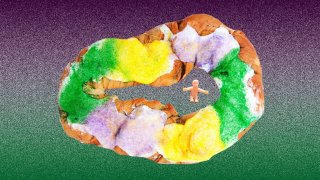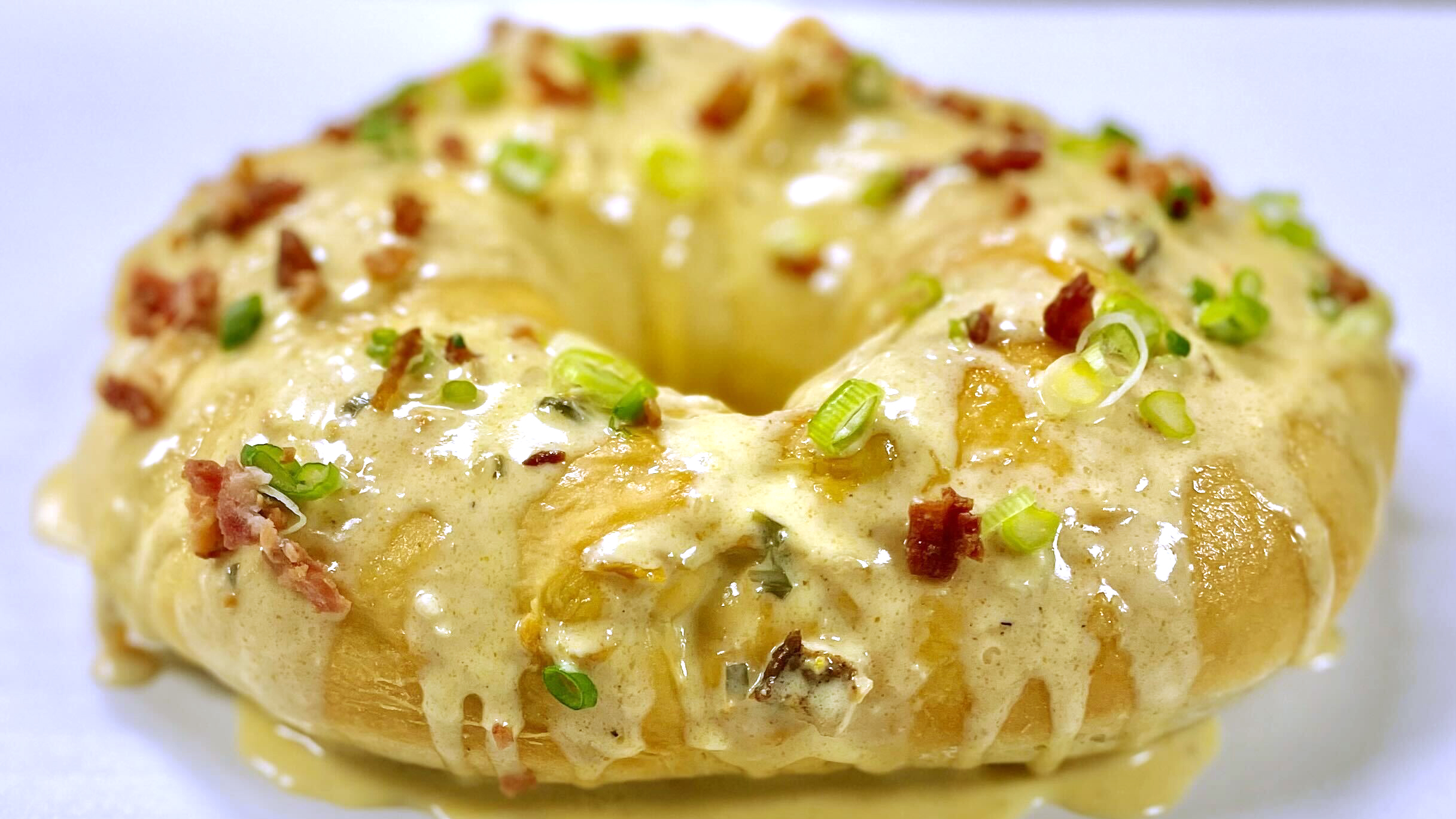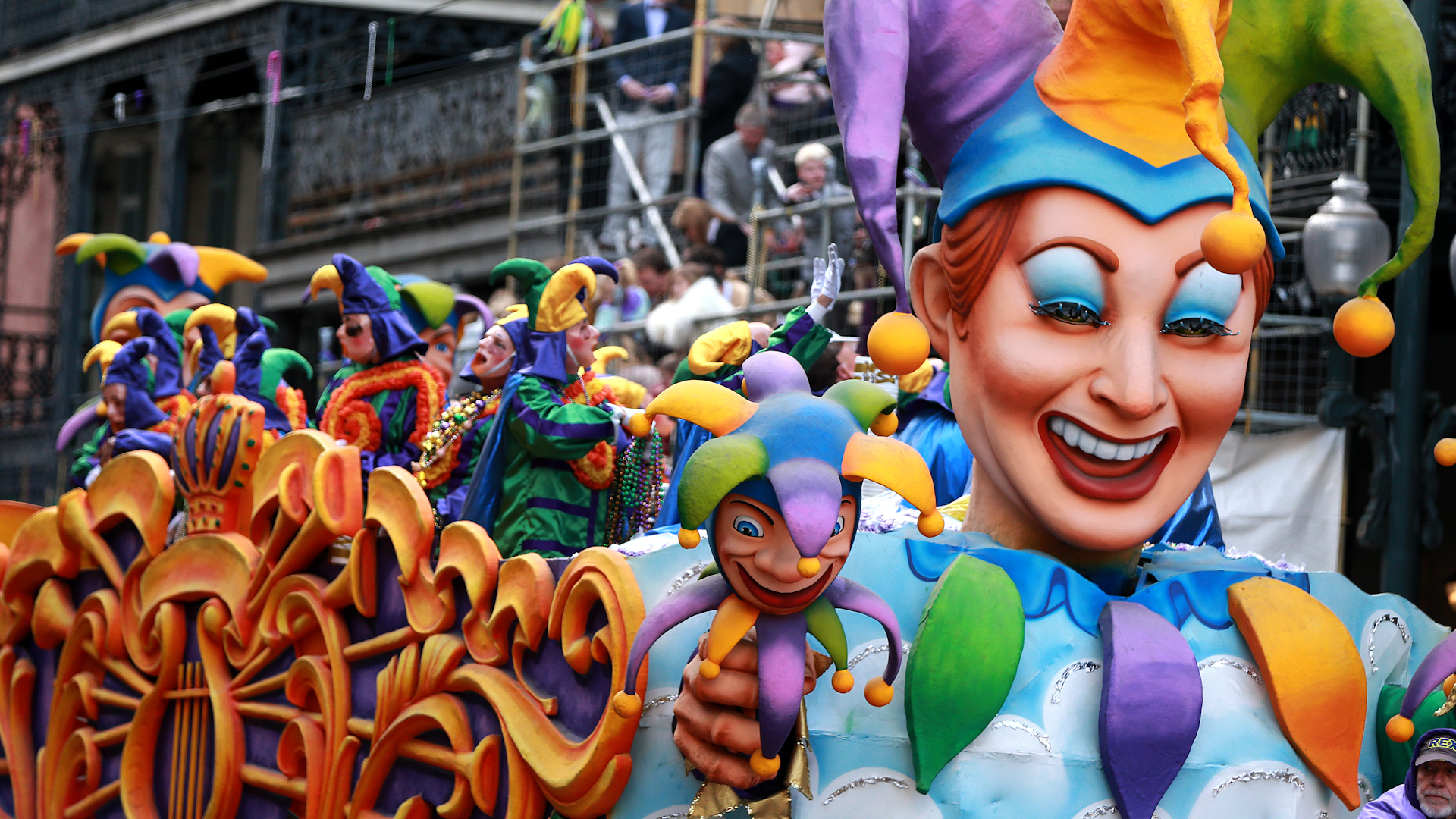
There may not be any big, boisterous crowds on Bourbon Street in New Orleans this year, but one thing is certain: Even during this odder-than-ever Mardi Gras season, there will still be king cake.
While king cakes have a long history and come in many forms, most people in the U.S. know them as doughnut-shaped cakes topped with icing and generous handfuls of purple, green and yellow sprinkles, the colors of Mardi Gras.
They're eaten during the Carnival season, which begins 12 days after Christmas, on Epiphany, and ends several weeks later on Fat Tuesday, which is always the day before Ash Wednesday. (In other words, the first day of "legal king cake season" began on Wednesday, as Food & Wine pointed out.)
Mardi Gras
Get top local stories in DFW delivered to you every morning. Sign up for NBC DFW's News Headlines newsletter.
What is the story behind the king cake?
King cakes are cakes associated with the Christian holiday of Epiphany, also known as Three Kings Day, which is celebrated in many countries. Sometimes they're called Epiphany cakes, although they're not always technically cakes. Some are more bread-like, while others may resemble a pastry.

There are various versions around the world. In France, they're called galettes des rois: round, puffed pastry cakes with a sweet almond filling. There's a fève, or a small trinket, traditionally a bean but these days usually a plastic or porcelain figurine, baked within.
In Spain and Latin America, it's rosca de reyes, an orange-flavored "wreath" of bread usually topped with dried fruit, with a small plastic or ceramic baby figure inside. (Yes, a baby — we'll explain.)

The Louisiana version of the king cake tends to be a brioche-like dough swirled with cinnamon and cream cheese, braided and baked into a circle or an oval (to resemble a king's crown), finished with icing and sprinkles. Sometimes it's also filled or topped with fruit, and there's typically a plastic baby inside these ones, too. Starting on Jan. 6, king cakes are ubiquitous in New Orleans, abundant at local grocery stores and bakeries.
Get the Recipe: Citrus Babka King Cake Pomegranate Caramel
The colorful king cakes weren't always a staple of Mardi Gras, though. A 1999 article from The Times-Picayune states that having king cakes throughout the Carnival season in New Orleans didn't take off until 15 or 20 years prior, so around the early 1980s, and that the Mardi-Gras-style cakes evolved from the European versions of king cake.
What does it mean if you get the baby in a king cake?
OK, back to the plastic baby thing. For the uninitiated, it may seem strange, cutting into a slice of cake and seeing a tiny plastic foot protruding from layers of cinnamon and cream cheese filling.
But it's all part of the fun of king cakes. The plastic baby is reportedly meant to symbolize baby Jesus. Whoever finds the baby (or whatever hidden item is baked or embedded in the cake) in their slice is crowned "king" for the day. It also often means they have to provide the next king cake or host the next party, so the celebrations continue throughout the season. Others believe it simply means good luck. (A 2018 story from The Times of Shreveport, Louisiana, said that some people take the baby literally — one woman told the newspaper that finding it "means you're the next one to pop out a baby.")
Whatever it means, and whatever your king cake looks like, it's clear there are many ways to celebrate the Mardi Gras season, even if large gatherings aren't on the agenda this year. And until they are, let's rejoice in the fact that if you have to eat king cake alone, at least you get the entire thing to yourself.
This story first appeared on TODAY.com. More from TODAY:




